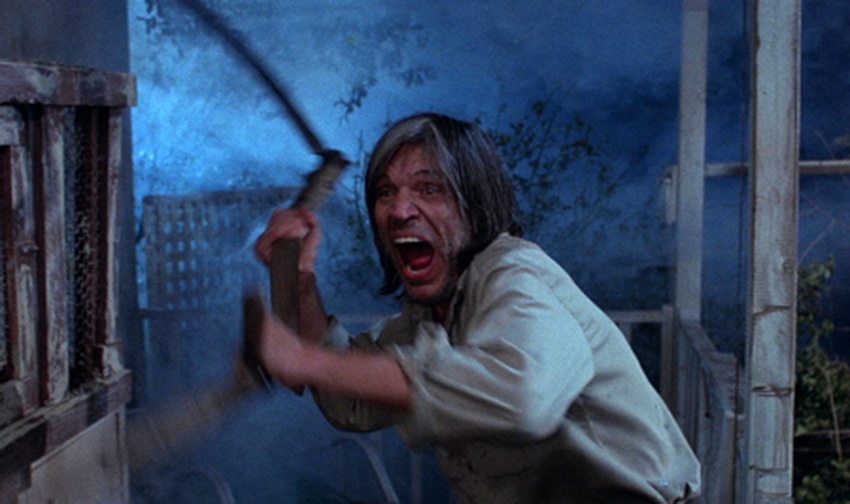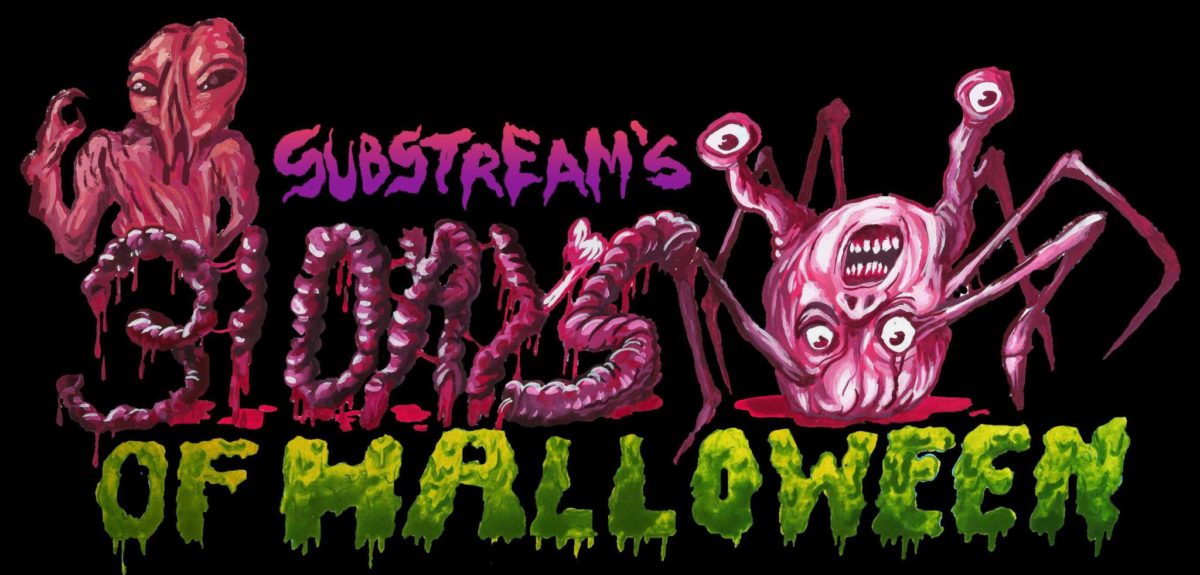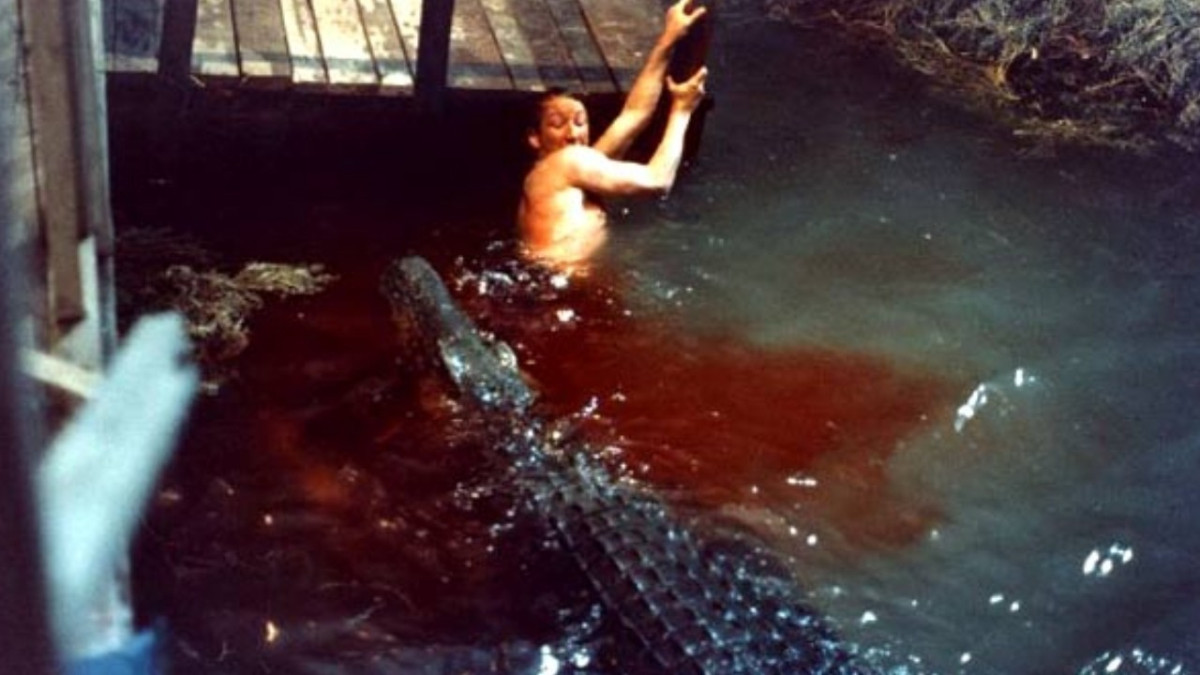Of all the holidays celebrated worldwide, no single day is loved by the Substream staff more than Halloween. With October’s arrival, the time has finally come to begin rolling out a slew of special features we have prepared in celebration of our favorite day.
31 Days Of Halloween is a recurring column that will run throughout the month of October. The goal of this series is to supply every Substream reader with a daily horror (or Halloween-themed) movie recommendation that is guaranteed to amplify your All Hallows’ Eve festivities. We’ll be watching every film the day it’s featured, and we hope you will follow along at home. Reader, beware, you’re in for a… spooky good time!

Day 17: Eaten Alive (1976)
We lost director Tobe Hooper this past August. While I haven’t liked most of his most recent work, he made a few films I hold in very high regard, those films being The Texas Chain Saw Massacre, The Texas Chainsaw Massacre 2, and Lifeforce. At his best, Hooper had this knack for mood, somehow simultaneously plunging the audience into despair but leaving room for humanity to shine through. You’d be remiss to find a movie like the first Texas Chainsaw that is as empathetic to Leatherface as it is to Marilyn Burns’ Sally. At his worst, Hooper could come off as shrill, sometimes beating down the audience until the punchline becomes dull. This is how I recall The Funhouse, which somehow loses itself when it hews closer to convention. Anyway, we’re here to talk about one of Hooper’s films I initially reviled but have come to admire quite a bit: Eaten Alive.
A little bit of background before diving into talking about one of the most stressful horror movies ever made. It was October of 2014 and the Coolidge Corner Theater in Brookline, Mass was holding their annual horror movie marathon. They announce the first two films to play and then keep the rest a secret. It’s essentially 12 hours of horror starting at midnight on the Saturday before Halloween. That year the headliners were Frankenstein (1931) and The Lost Boys. Eaten Alive was one of the unannounced works to be played. While it was on a 35mm print, there was hardcoded Japanese subtitles and the print was beaten to shit. It’s one of the rare occasions where the Blu-ray was/is better than how I initially saw it. I just didn’t expect to watch something crafted from the grossest depths of exploitation, bordering on snuff.
Eaten Alive starts on Clara Wood (Roberta Collins), who is very much not enjoying life as a prostitute at Miss Hattie’s brothel in East Texas. She gets kicked out of the brothel after not meeting the demands of Buck (Robert Englund), who seemed a bit more interested in sodomizing Clara than anything else. After Clara gets kicked out of Miss Hattie’s, she seeks shelter at the decrepit Starlight Hotel, a venue with its own alligator hanging out front in a pond. Judd (Neville Brand), the Starlight’s proprietor, assaults Clara with a pitchfork and then chases her right into the alligator’s clutches. A woe begotten couple (Marilyn Burns and William Finley) then show up with their young daughter at the hotel. You can imagine that that doesn’t go very well for their marriage. This new thread runs concurrently with Clara’s father (Mel Ferrer) and sister (Crystin Sinclaire) investigating the area for any sign of Clara.
What follows Clara’s death are these long and screeching chase sequences, with the person being chased almost always being murdered brutally. The yelling and screaming becomes deafening, yet Hooper seems very dedicated in making sure the audience knows where every single character is at any given time. There are no real jump scares outside of the depth of Judd’s brutality as people start getting knocked off.
Hooper once said that his experience on set was interesting as everything was shot on a sound stage. It shows, too. Nothing in Eaten Alive feels like it’s based in reality, which may be its saving grace. Underneath all of the nastiness, Hooper wants to study what makes Judd tick and what that says about the bigger picture: All of the American South, not just East Texas. His direction isn’t about pointing fingers to indicate a problem, just to show things as they are. Eaten Alive is loosely based on a man in 1930s Texas who owned a bar and fed some of his patrons to his pet alligator. The real story is the most compelling thing about the film because that core psychological study is sunk under so much junk. Exploitation cinema’s obsession over women, their bodies, and violence done to them takes the forefront here over Hooper’s best impulses.
You can see Hooper’s hard work in Judd, the most well-developed character in the movie and also the most despicable. Judd’s behavior can switch on a moment’s notice, his fits of PTSD (which we know not the origin of) making him lash out in the most violent ways possible. I once read Eaten Alive as cheap exploitation pushed too far, but now I see it as an interesting relic of Hooper’s signature style trying to break through the surface-level shock. It’s a great study of when a director comes hot off the heels of his big break and wants to make something more ambitious, but comes up short for a myriad of reasons.














